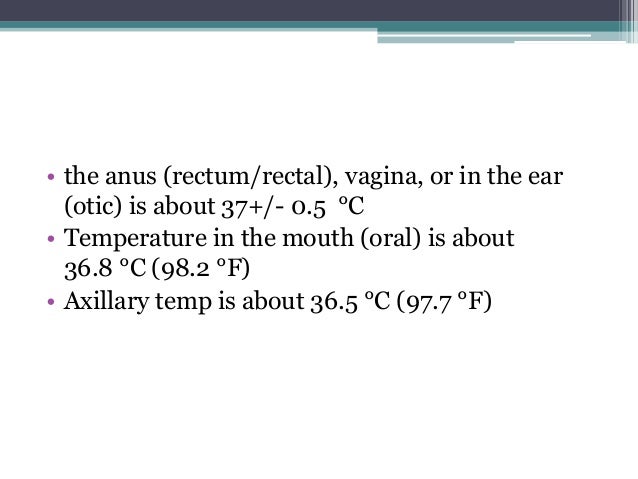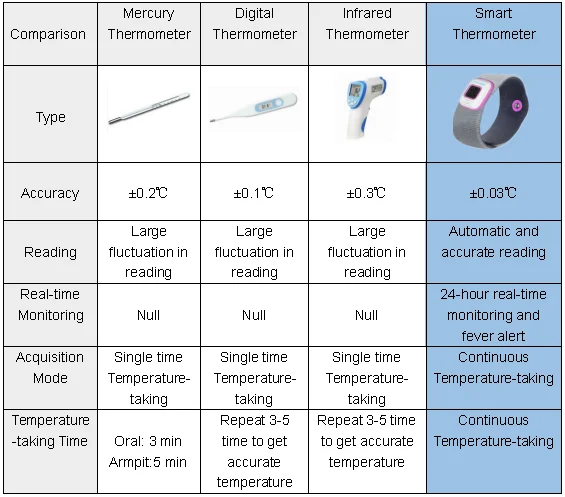

The oral temperature as measured under the tongue is the most accurate and practical site for thermometry. Therefore conversion is neither necessary nor appropriate. There are accuracy problems with all of the proposed formulas for converting a measured temperature at any one site with the temperature at another site or with the theoretical core temperature. Conversely, during vigorous exercise the muscle temperature may be considerably higher than the core. For example, in shock or other poor peripheral perfusion states, the temperature of the peripheral sites may be much lower than the core. Even these invasive measurements are not accurate for all parts of the body. Core temperatures are best measured in the pulmonary artery or by a deep colonic probe. The measurement of true core temperatures is too invasive for routine clinical use. Fever as a response to an infectious or inflammatory stimulus must be distinguished from hyperthermia caused by exposure to extreme environmental conditions or pathologic responses to anesthetics or drugs. The interactions of these triggered host factors result in a change in the normal temperature range which is usually tightly controlled. It is stimulated by the presence of an infectious or inflammatory trigger.

This chapter will review what is known about this "hot topic" and suggests an approach to the questions and concerns above.įever is a state of elevated core temperature caused by a complex and highly regulated host response involving cytokines and numerous other acute phase reactants with activation of physiologic, endocrine and immune systems. Fever in children is associated with many myths and fears which are widely shared by lay people and medical professionals alike.

He will go into convulsions or develop brain damage!" What should you do?įever is a fascinating phenomenon, highly conserved throughout the animal kingdom as a response to infection and inflammation. His mother is crying, saying, "Do something! The temperature keeps going up. Your nurse urgently requests permission to give him a dose of ibuprofen and a cold water bath to lower his temperature. The physical exam is otherwise unremarkable except for the fever and tachycardia. He cries immediately when touched with a stethoscope and vigorously resists examination.

He is alert and active, sitting on the exam table playing with a toy car. His past medical history, family history and review of systems are unremarkable.Įxam: VS T 40.7 (105.3 degrees F), P 185, R 24, BP 95/56, oxygen saturation 99%. His mother notes that he is getting a new molar. He has not vomited, had one normal formed stool today, and does not appear to be in pain although he is more fussy than usual and he appears tired. He has urinated slightly less often than usual. Despite the fever he has been playing with his toys but has refused solid foods. He has also been placed in a cold water bath but he objected so forcefully that it lasted only 5 minutes. His last dose was 1 hour prior to your exam. When his fever remained over 40 degrees (104 F), they gave a second dose one hour after the first during every 4 hour period over the past day. His mother and grandmother have given acetaminophen as directed on the package. His temperature has been measured as high as 40.8 degrees (105.4 degrees F). Burns School of MedicineĪ 15 month old boy is brought to the office by his very concerned mother who reports that he has a high fever which doesn't come down even with double doses of acetaminophen and a cold water bath. Case Based Pediatrics Chapter Case Based Pediatrics For Medical Students and Residentsĭepartment of Pediatrics, University of Hawaii John A.


 0 kommentar(er)
0 kommentar(er)
